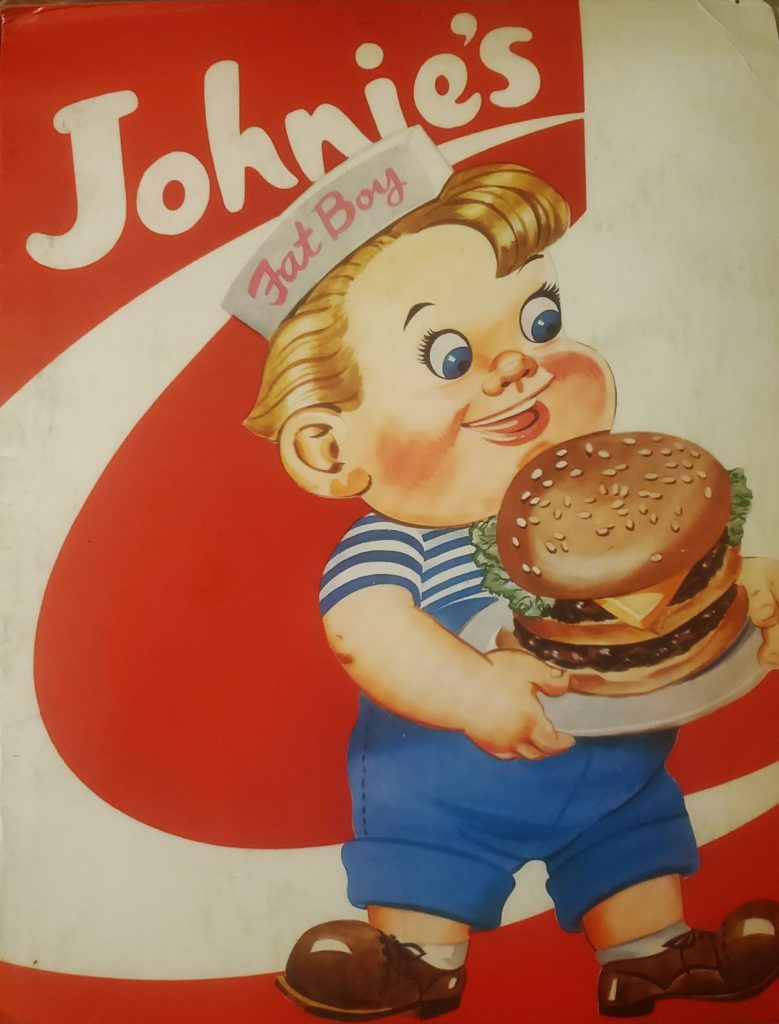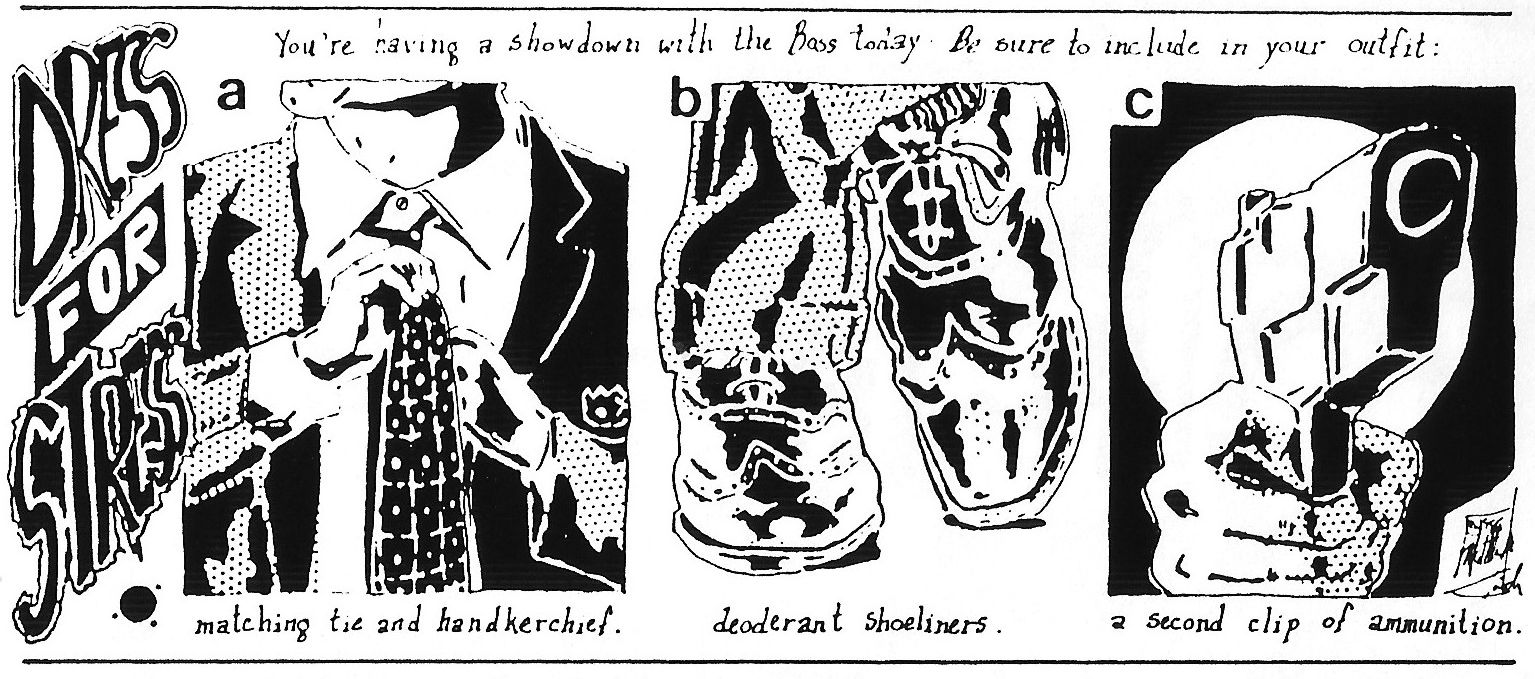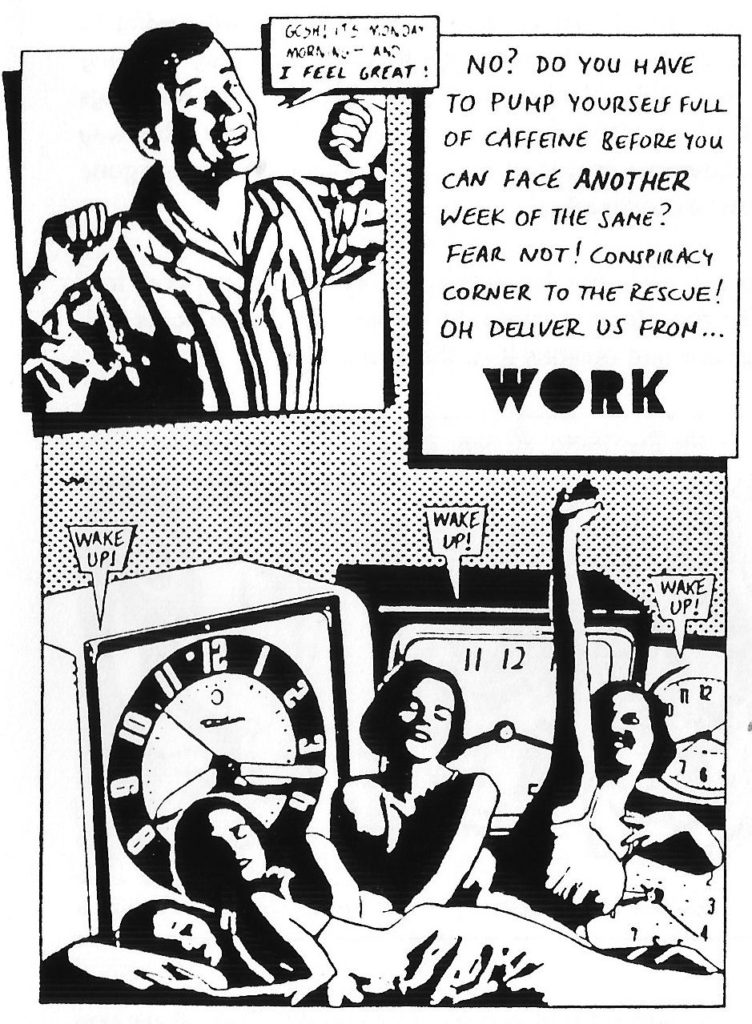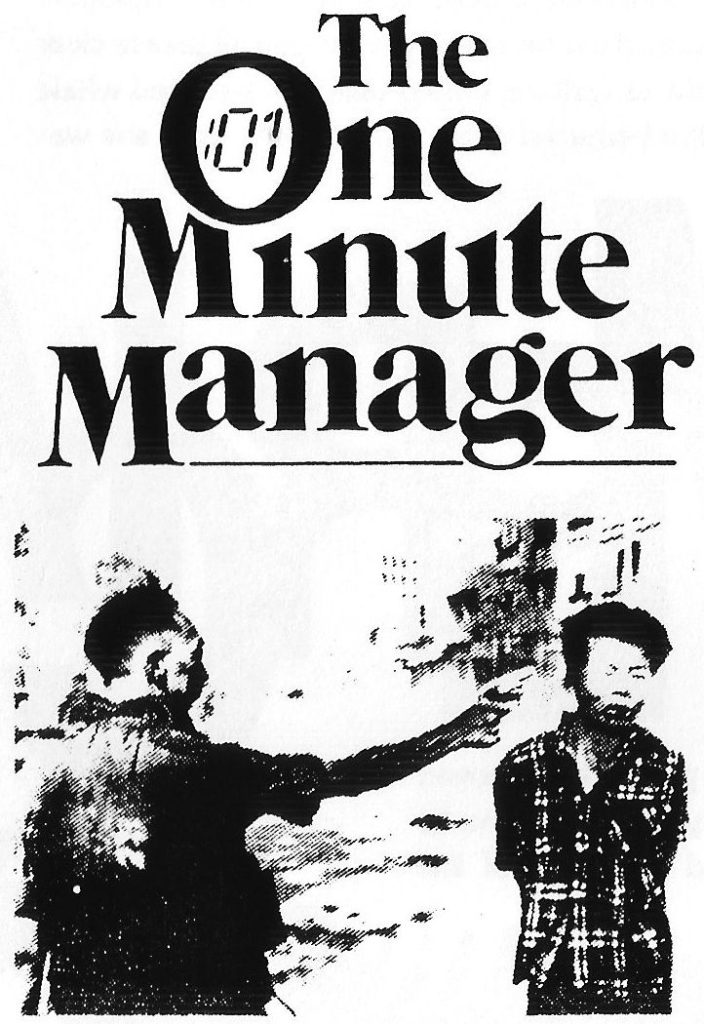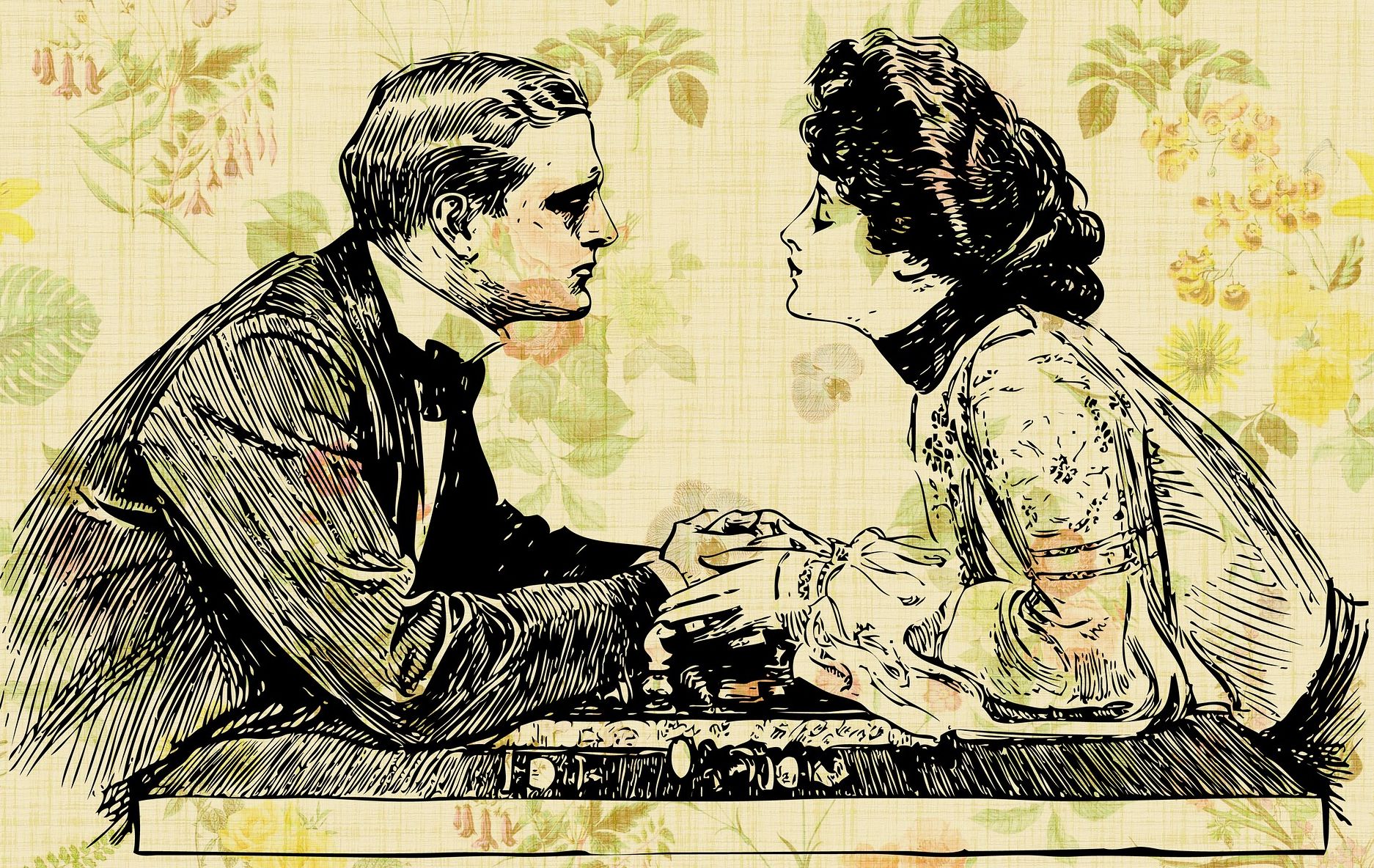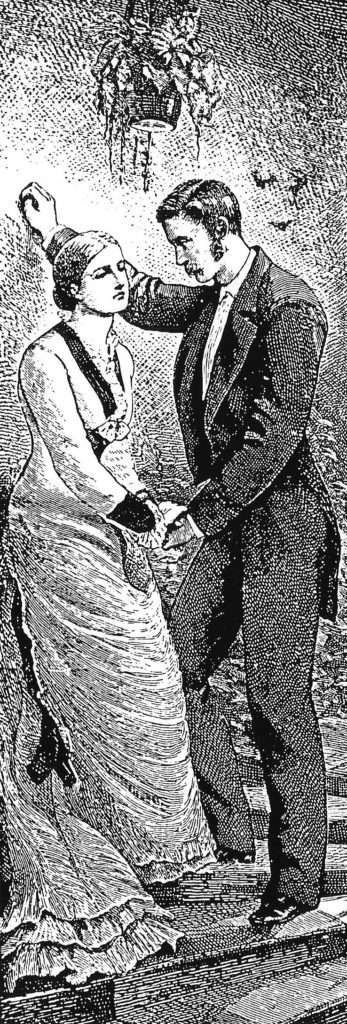“Life is harder than censorship allows”
An interview with Jorg Buttgereit and Mannfred Jelinski
Much of the fame, or notoriety, for ‘Nekromantik’ has come down on the head of director Jorg Buttgereit, but I’m sure he’d be the first to agree that it’s just as much a team effort. A leading player on that team must be producer Mannfred Jelinski – his efforts are not limited to financing the picture, he also is responsible for some of the visual effects, works on the subtitling, and tirelessly promotes all of Jorg’s films around the globe. The two of them work together like any good double act, but when they were over in Britain recently promoting ‘Nekromantik 2’, I managed to corner Mannfred for a chat, though his partner still managed to get the odd word in…
How did you come to work with Jorg?
MJ: I went to some screenings to see what people in the underground were doing and did some video transfers for him. The first film was ‘Bloody Excess’ in the Fuhrer bunker and I found what he is doing very newand refreshing. So we did a documentary together about the punk movement, and then Jorg did ‘Hot Love’ – after that I was pretty sure that this was a man with which I wanted to work!
Were people’s expectations a problem with ‘Nekromantik 2’?
MJ: The public did have some expectations of the film, but that’s their problem! I found it very satisfying to give the story dimensions that I felt were missing in the first one.
Nekromantik 2 isn’t Nekromatik. It’s more like Love Story.
— Jorg Buttgereit
JB: I’m the only one doing films about necrophilia and death-related things, and as no-one else is doing it, I have to do a second one. The corpse fucking is not the important thing for me in ‘Nekromantik 2’, the important thing for me was to make the audience care about the actress. it’s really important for them to be on the side of the girl, despite what’s she doing, and I think it works. The funny thing is that most of the women who’ve seen the film are really pleased with it. If you watch carefully, it’s a kind of feminist movie. Some people may have a problem – they normally understand the things the guy is doing but in the sequel he’s a little bit stupid.
Can you tell me what the censorship situation in Germany is like just now? [There’s been something of a crackdown recently, culminating in a print of ‘Nekromantik 2’ being seized, literally from the projector]
MJ: There are District Attorneys in towns in Germany – I guess they’re collecting films like this. They say to the public “We are fighting for a clean screen” but I fear they are collecting them. They know too much about these films, so I’m convinced that they are fans! I do not fear any interest in me, the only thing they can do is destroy some things in my private comic collection. What have I done? I’ve made some movies, and I stand by them. I think they have a good morality and I can defend them. After the confiscation in Munich, I made a sheet of clippings cut out from newspapers and put them together with a heading that can be translated as “Life is harder than censorship allows”, and that’s the truth. What we do in the film is to tell the truth through a picture of life.
Are you completely opposed to all censorship or do you feel that some censorship is necessary?
MJ: I would draw my own line like the chairwoman of the censorship authority in Germany. She sees all the violence that is done to adults but what she is after is sex with children – there are some things you just can not allow. If it is special FX, I don’t see any reason to take it off the market – it’s better that people see it on TV rather than doing it themselves. I’m not convinced that watching something on TV will affect people afterwards in reality. I studied psychology and it doesn’t say that such a cause and effect happens. The more I think, the more I’m convinced that if you are prevented from seeing something, the more likely you are to do it. It’s a release, like the Greeks had with their theatre.
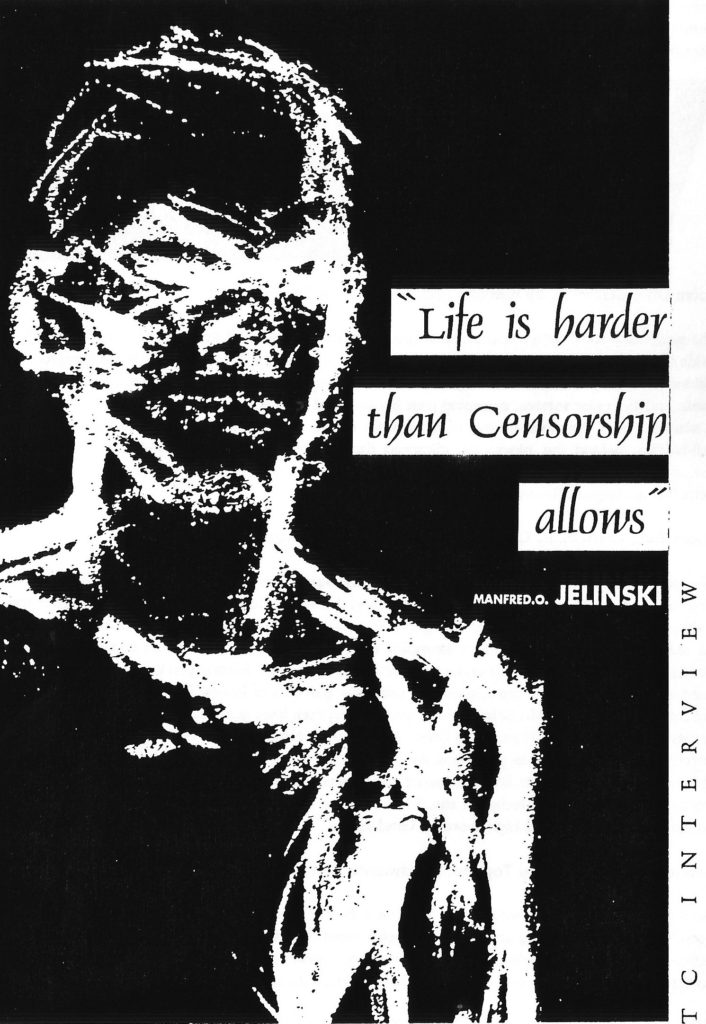
JB: If there’s a need to show something, I’ll show it. I don’t have this approach of just showing things to offend people. It might sound stupid, but we care about what’s going on in the story, but to convince people of what we’re dealing with, we have to show them.
Are there many other underground film makers in Germany?
MJ:: Yes, but we are the only ones who’re doing it independently. We tried to get some support from German television for ‘Nekromantik’ – they have open screenings – but when the woman who runs it heard the name Buttgereit, she turned her back on us! The regular way is to do it is to try and get money from the Government. There’s some money that can be given to film-makers: you send in your script and maybe they support you, with the whole money or half the money. It takes too long to give them the script and for them to reply and you know what they’re going to say anyway! If we do it ourselves, we are free to do what we want. Hollywood pictures are for too many people – I prefer films that are aimed at a few people, a special group.
So no chance of a Hollywood remake of ‘Nekromantik’, like they did with ‘Three Men and a Baby’, and are doing with ‘The Killer’?
MJ: I think this is unrealistic. They couldn’t deal with a story like this. I think I’m too old for all this moving around – and not just with your body, but also with your mind. I don’t want to do what other people want me to do.
NEKROMANTIK 2 (Jorg Buttgereit) – Monika M, Mark Reeder.
Jorg Buttgereit is very anxious that N2 is not seen as “a gore film”. He’s partly right – while there’s none of the fantasy element prevalent in most horror, this is still closer to the splatter movie than any other genre. It begins with the suicide of Daktari Lorenz, as shown at the end of ‘Nekromantik’, but he’s not allowed to rest in peace. As the final shot of the original movie suggested, he’s dug up by a female necrophile (Monika M) and used as a sex object. This brings the corpse into conflict with her boyfriend (Mark Reeder), who’s worried about his girl – little things, like her insistence he doesn’t move when they’re having sex and the presence of some VERY odd stuff in the fridge…
It’s effectively the same basic idea, viewed from a completely different angle. Sensibly, with everyone ‘knowing’ what to expect this time round, the makers avoided slavishly remaking the original. In some ways the two films are mirror images: while the original was very much a tragedy, the sequel is more upbeat – although he dies 30 seconds into N2, Daktari Lorenz finally gets the relationship he wants! Masculine becomes feminine, with most of the film told from Monika M’s point of view, and the death-ending in the original is replaced by the creation of a new life, with one last twist of the knife which hints at a further sequel, though this isn’t currently planned. Technically, the sequel is obviously more advanced in most areas, right down to the soundtrack, which is available on CD this time, rather than vinyl!
Jorg is developing a recognisable style and there are elements in N2 that will be familiar from his other work. A 360 degree circular pan and a “bridge shot” are very reminiscent of ‘Der Todes King’ and the film-within-a-film theme appears again, with another of the spoof movies included in all three features to date. The scene where the near-mute heroine dismembers a corpse in the bathtub and wraps the bits in plastic bags echoes ‘Angel of Vengeance’, which seems to be a favourite film of Jorg’s judging from this and the scene in ‘Der Todes King’ almost directly copied from Ferrara’s movie.

The direction of N2 is slow and documentary in style, almost real-time on occasion, in what Buttgereit says is a reaction to the current wave of lightning-fast, pop-video visuals, as seen in the Hong Kong movies. This is occasionally carried too far, and a sharper editing hand might have helped the overall coherency as several scenes make their point and then meander on regardless. Odd touches of grubby realism abound, and add to the gritty atmosphere, for example, the men always keep their socks on, whether they’re alive, dead or having sex!
The tone occasionally lightens, with some black humour which helps make the film more watchable than the original. Beatrice M, the girlfriend from ‘Nekromantik’, returns to dig up the corpse of her old flame, only to find she’s been beaten to it, and the scene where Mark Reeder discovers a clingfilm wrapped penis in the fridge is a classic. However, the question of how his girlfriend explains this away is never answered, one of several slightly annoying such omissions.
However, N2 generally hangs together well, and there are dark hints of things outside the scope of the film, like a group of lady necrophiles who gather to watch dodgy videos (anyone who didn’t like the rabbit-killing in the original will NOT enjoy this scene. Though probably less cruel, it’s even grosser and, I reckon, more gratuitous). There are also various in-jokes to spot: the director in a cinema audience, some Karen Greenlee artwork (the female necrophile interviewed in ‘Apocalypse Culture’), a Jelinski gravestone in the cemetery and a statue of a girl leading a monkey that curiously echoes the posture of the couple walking past it.
It may be slicker and prettier than the original, but the feel remains the same. Buttgereit & Jelinski basically don’t give a damn about their films finding an audience, and make the films THEY want – in these days, where the horror film is becoming ever more sanitised, ‘Nekromantik 2’ is a brave antidote to the waves of carefully researched Hollywood products. B+.





